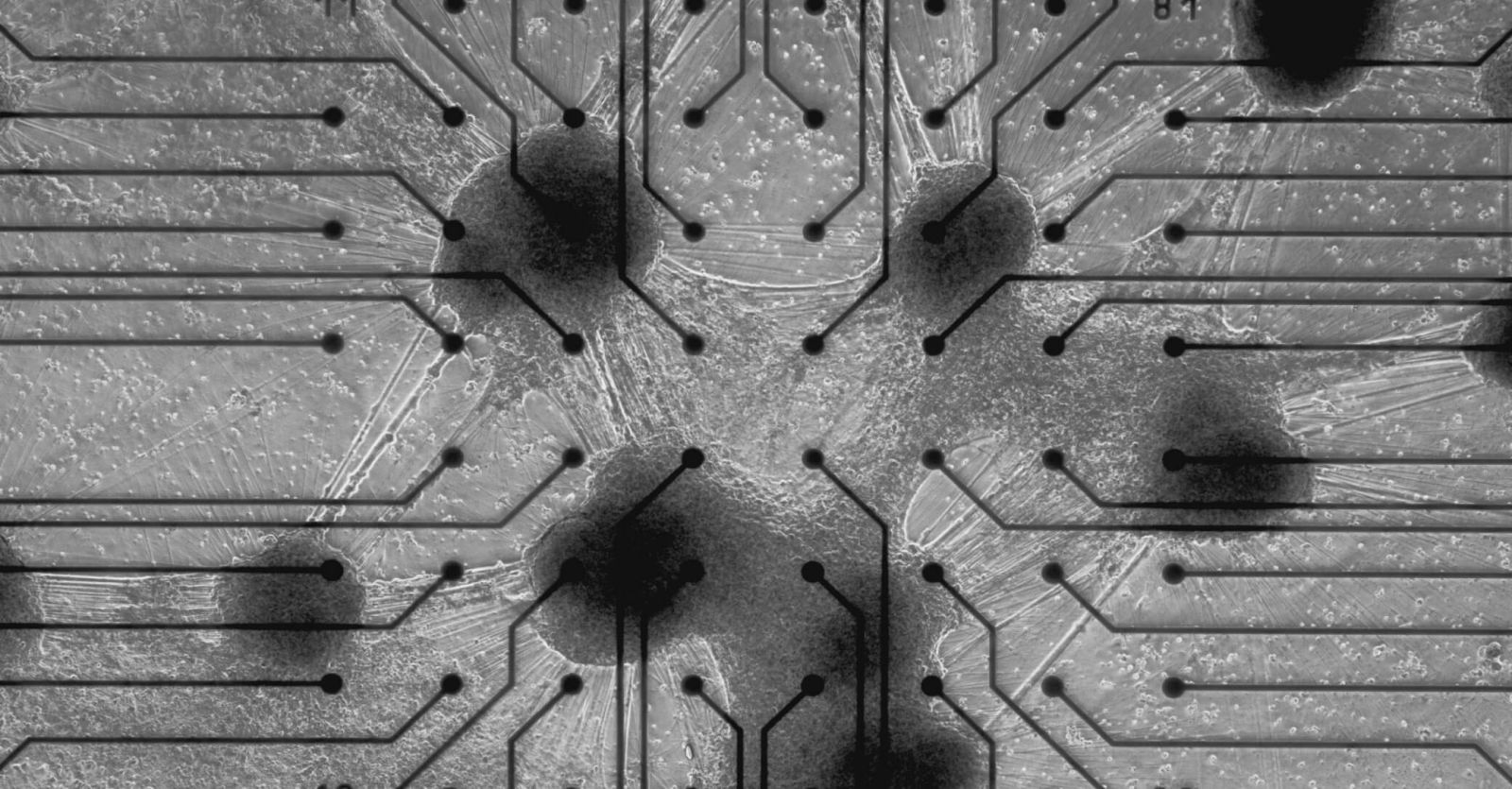This bio-computer uses human neurons: towards even more powerful AI? 🖥️
Published by Cédric,
Article author: Cédric DEPOND
Source: Cortical Labs
Other Languages: FR, DE, ES, PT
Article author: Cédric DEPOND
Source: Cortical Labs
Other Languages: FR, DE, ES, PT
Follow us on Google News (click on ☆)

Human neurons on a silicon chip.
Image Cortical Labs
This bio-computer, the result of six years of research, relies on human neurons grown on a silicon chip. These neurons, nurtured in a controlled environment, interact with a biological operating system (biOS) that simulates a virtual world. This innovation promises major advances, particularly in drug discovery and disease modeling, while reducing animal testing.
A fusion of biology and technology
The CL1 uses human neurons grown from stem cells, placed on a silicon chip equipped with electrodes. These electrodes send and receive electrical signals, creating an interface between the biological neural network and the computer system. This symbiosis enables smooth communication and rapid adaptation of the neurons to their simulated environment.
Unlike traditional computers, the CL1 leverages the natural plasticity of neurons, which can reconfigure themselves based on the stimuli they receive. This flexibility, resulting from billions of years of evolution, far exceeds the capabilities of current AI models. In a way, the neurons "self-program" to optimize their performance.
The biological system is supported by a controlled environment, including pumps, a gas mixture, and temperature control. Each CL1 unit is autonomous and energy-efficient, with a total consumption of 850 to 1,000 watts for a rack of 30 units.
How are neurons grown in the laboratory?
The neurons used in the CL1 are grown from induced pluripotent stem cells (iPSCs), which are cells capable of differentiating into any type of cell in the human body. These stem cells are typically obtained from blood samples or tissues, then reprogrammed in the laboratory to become neurons. Two main methods are used for this differentiation.
The first method uses small molecules to replicate the conditions of in utero brain development, guiding the stem cells to transform into neurons. The second method involves directly activating specific genes related to neuronal development, allowing for more targeted differentiation. Each approach has its advantages: the first produces high-purity neurons, while the second generates cellular diversity closer to that of the human brain.
Once differentiated, the neurons are placed on a silicon chip equipped with electrodes, where they form a functional neural network. This network is then maintained in a controlled environment, with nutrients, an adapted gas mixture, and a stable temperature, to ensure its survival and proper functioning. This laboratory-grown neuron culture represents a major breakthrough for neuroscience and artificial intelligence research.
Promising applications
The CL1 could enhance medical research by enabling more precise and personalized drug testing. By replicating human neuronal reactions, it offers an ethical alternative to animal testing while providing more relevant data for the study of neurological diseases.

The CL1 is already on the market.
Image Cortical Labs
In the technological field, this bio-computer could accelerate the development of AI, particularly for robots and automated systems. Its ability to learn quickly and adapt dynamically makes it a powerful tool for applications requiring decision-making.
Finally, the CL1 is designed to meet the needs of research laboratories, universities, and academic institutions, with an initial cost of $35,000 per unit. For researchers lacking the resources to acquire the hardware, Cortical Labs offers remote access via the cloud, dubbed "Wetware-as-a-Service." This solution allows the use of the bio-computer without significant hardware investment, democratizing access to this technology and paving the way for international collaborations.
To go further: What is synthetic biological intelligence (SBI)?
Synthetic biological intelligence (SBI) is a form of artificial intelligence that uses biological neurons as a computational substrate. Unlike traditional AI, based on silicon chips, it leverages the natural plasticity and adaptability of neurons to create more dynamic and evolvable systems. These neurons, grown in the laboratory, are capable of self-organizing and forming networks, replicating certain aspects of human brain function.
SBI thus combines the advantages of biology and technology: neurons bring unmatched flexibility and energy efficiency, while electronic components ensure the precision and speed of calculations. This approach enables the solving of high-level problems, such as disease modeling or the optimization of automated systems, with increased speed and relevance.
Moreover, SBI opens new ethical perspectives by reducing reliance on animal testing and offering a model closer to human biology for medical research. It represents a major step towards a more "organic" and biologically respectful artificial intelligence.